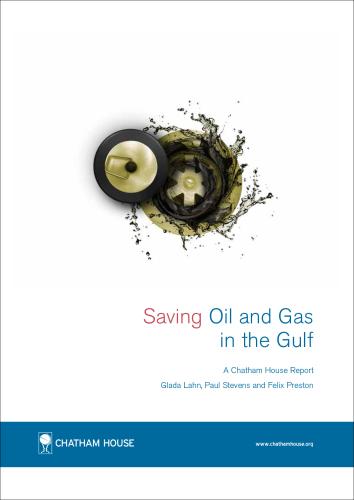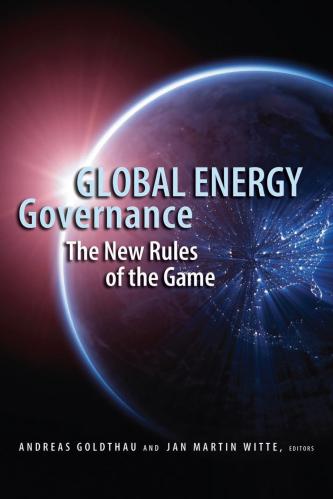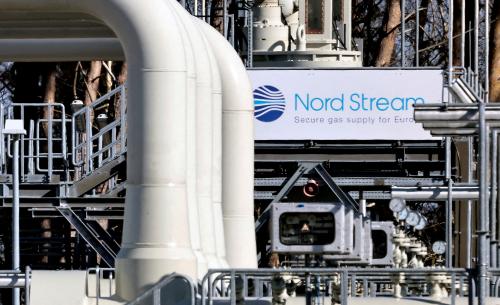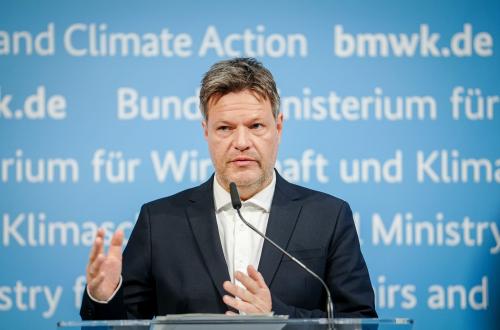In nearly every part of the energy world today, one sees abundance. New technologies and business practices are unlocking all kinds of energy resources and empowering consumers to make choices about what they want to buy.
One consequence is lower energy prices. Oil prices were cut in half during the price collapse that began in late 2014. Natural gas is well supplied too. North American prices are historically low and new liquefied natural gas projects, particularly in the United States and Australia, are creating a glut of gas supply globally. Folks in the energy industry have started referring to this as “lower for longer,” because it looks like this abundance and the resulting low prices are here to stay, at least for a while.
We at Brookings are taking a closer look at the economic, political, and security implications of the new energy abundance and oil and gas prices that are likely to stay “lower for longer.” A number of trends contribute to the lower prices, including rising oil and gas production in the United States, Russia, and Iran; OPEC’s weakening power; and flattening demand growth in OECD countries and China. In turn, lower energy prices have contributed to the political meltdown in Venezuela, the Saudi reform movement culminating in the Saudi Aramco IPO, and a drive for efficiency and innovation in oil and gas production.
I’ve been involved in this industry for a while and I can’t overstate what a fundamental change this is. Not so long ago, the notion of peak oil—which essentially predicted that oil would run out—and inevitably skyrocketing oil prices was all the rage. Not everyone bought into this theory, particularly engineers, but for the believers, it was gospel. (I remember running a meeting on options for the U.S. Strategic Petroleum Reserve in 2006, when I worked for the Government Accountability Office, that kept getting derailed to discuss peak oil.)
What a difference a few years can make. There is now general recognition that the oil age won’t end because we will run out of oil, or even run out of affordable oil. Some advocates for renewable energy are now focusing on the idea of “stranded fossil fuel assets” or “unburnable carbon,” a view diametrically opposed to the peak oil ideas of just a few years ago. Today there’s more focus on peak oil demand than peak oil supply, with several scenarios from oil companies and other researchers expecting global oil demand to peak in the 2030s. This is a total shift from where we were just a few years ago.
The ongoing U.S. oil and gas production renaissance was an important contributor to the new age of abundance, and is the focus for this introduction to the new world of low energy prices.
A Revolution in U.S. Oil and Gas
A new way of producing oil and gas began in the United States in the mid-2000s. It got started in natural gas, but U.S. crude production really began to take off around 2011, when oil prices were over $100 per barrel. Prices that high have a way of bringing out ingenuity, and the combination of long-lateral horizontal wells and hydraulic fracturing (often called fracking) brought about production from shale resources that had never been economic before.
But why did it happen in the United States and not elsewhere? A number of factors contributed. An important aspect of the revolution is the way mineral rights are owned in the United States. The landowner also owns the mineral rights below the land—an uncommon situation internationally, but one that gave landowners incentive to allow oil and gas development. Interest rates were very low at this time (and still are), which made it easier for smaller operators to borrow money and take big risks in pursuit of big returns, a tradition in the U.S. oil industry. And the United States has an active research and innovation culture. Each of these factors also contributes to the challenge of taking these new production techniques abroad.
These innovations paid off handsomely, with U.S. oil production increasing 66 percent from 2011 to 2015. But all this unexpected production contributed to a price bust that started in late 2014. At its lowest point, crude oil was going for around $30 a barrel.
Low prices are the downside of abundance for producers. But what has happened since the price crash is the most interesting part of this story, and the part that changes how we think about oil markets going forward.
U.S. Shale Changes the Equation…
The business model for shale oil and gas production in the United States is very different from conventional production. Conventional oil and gas production generally involves spending huge amounts of money to find large fields that produce for a very long time. When prices are high and times are good, international oil companies focus on bringing new fields into production. But this business is inherently lumpy, with big upfront investments that take a long time to pay off. Additionally, once a conventional field is in production, the variable cost of producing another barrel of oil is generally small, so this production is not very responsive to changes in price.
This lumpy nature of investment and production contributes to the boom and bust swings we see in oil prices. Companies invest when times are good and pull back when times are lean, exacerbating the cycle. As an example, global upstream oil and gas development investment decreased an estimated 21 percent in 2015 and an additional 27 percent in 2016 amid the oil price collapse.
Shale oil is different. Shale wells are quick and relatively inexpensive to drill, often with wells going out horizontally in several directions from the same well location. Shale wells also have much shorter productive lives than conventional wells, declining tremendously after the first year, whereas a conventional well can be productive for many years. Inexpensive wells with shorter lifespans make shale oil less like conventional oil production and more like a manufacturing operation—like making widgets. Shale oil production is much more responsive to price swings. When prices fall, drill less and production quickly falls. When prices rise again, fire up the drill rigs and production will quickly follow.
… and the Market Reacts
On the margins, shale oil production has the potential to dampen the boom and bust price swings that have characterized the oil market for so long. But the oil market has another significant stabilizer: OPEC supplies about 40 percent of the oil market, and this share has been generally consistent for decades. OPEC has managed production over the years to respond to fluctuations in supply, particularly supply disruptions.
But until recently, OPEC did not respond to the increased oil production in the United States—it kept producing at the same level until late 2016. Some argue that OPEC was trying to push U.S. shale producers out of business by keeping prices low. I don’t think this explanation is correct, but even if it is, it wasn’t an effective strategy. U.S. oil production is expected to rise again this year, after a dip in 2016. The New York Times reports that 123 U.S. shale producers have gone through bankruptcy in the recent years of low oil prices, but some of these are now emerging with less debt. Others sold assets to companies more able to develop them. And throughout the low price cycle, engineers have been focused on producing shale oil at lower cost. Companies are drilling longer laterals, fracking more efficiently, and using more sand to keep those fractures open during production—all lowering costs. Anyone who expected the U.S. shale industry to fold under price pressure underestimated how competition can bring forth innovation for cost reduction.
In my opinion, OPEC’s strategy of maintaining production was more about preserving market share and responding to a shift in the center of oil demand toward Asia. In this new world of energy abundance, maintaining relationships with customers is more important than trying to boost the price. Asian customers also tend to be more relationship-focused than those in the West. And shale production in the United States is the new reality, not a short-term phenomenon that OPEC can respond to, then go back to business as usual.
OPEC, Russia, and a few other oil producers began pulling back on production at the end of 2016, an agreement recently extended to March 2018. Opinions differ on the reasoning behind this change in strategy, from a goal of working off today’s high levels of inventory to pushing up oil prices, particularly in advance of the Aramco IPO.
Countries that rely on oil revenues are developing long-term strategies to deal with the loss of revenue. For example, Saudi Arabia has announced a grand plan, called Vision 2030, to revamp its economy away from reliance on oil. As a start, it is planning an IPO to sell 5 percent of Saudi Aramco, an unthinkable notion not very long ago. Low oil prices have been an important driver of Venezuela’s economic meltdown. But some countries are taking advantage of the low price situation to improve governance of their energy sectors, a topic we at Brookings will explore in future work.
Oil producers everywhere are turning to technology to lower their costs, even in mature oil fields and in deep water, to compete in this world of abundance. And the new abundance has implications for geopolitics and energy security around the world. Success in this new world requires a strong investment environment, with rule-of-law and policies that allow the mobilization of long-term capital. Minimizing above-ground risks is crucial to encourage investment in this low-price environment, unlike in the past when operators were willing to take greater risks to gain access to resources. As the tide goes out, much is revealed—high prices can mask the challenges of bad fiscal schemes, corruption, or poor management. This series will explore the geopolitical implications of low prices and energy abundance around the world.







Commentary
The new energy abundance—what happens when energy prices are lower for longer?
October 19, 2017